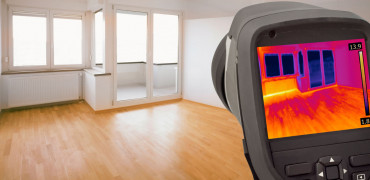What is fuel poverty?
Put simply, fuel poverty is “the condition of being unable to afford to keep one's home adequately heated.” According to the ‘End Fuel Poverty Coalition,’ there are around 4.5 million fuel poor homes in the UK today. There are also a further 21 million UK households suffering from poor energy efficiency - below B and C on an Energy Performance Certificate.
A fuel poor household is roughly defined as one which needs to spend more than 10% of its income on all fuel use to heat its home to an adequate standard of warmth (21°C in the living room and 18°C in other occupied rooms).
What is the human cost?
A recent study by University College London (UCL) estimated that 9,000 people died last winter in England and Wales as a result of living in a cold home; the highest number for 15 years.
In an interview with the BBC show Panorama, Dr Jessica Allen, whose team conducted the study, said “This was not the coldest winter on record. People dying from cold homes are a result of high fuel prices, low incomes and poor insulation. It's entirely preventable.”
Put simply, fuel poverty is “the condition of being unable to afford to keep one's home adequately heated.
How can it be prevented?
Helping those in fuel poverty financially to cover their bills might be a quick solution, but it doesn’t tackle the overall problem of inefficiency long-term.
Heat pumps are just one example of a technology that can immediately help alleviate fuel poverty. By extracting renewable energy from outdoor air, the system maximises the energy provided to the household and can offer a reduction in run costs; studies suggest by up to as much as 10% of the UK national average. Also, in addition to helping the tenant reduce their heating bills, the renewable heat from the heat pump can qualify for quarterly RHI payments for the landlord, which either offsets the cost of the heat pump or provides funds for further upgrades to property and heating.
Because heat pumps are best suited to more continuous running, they provide a more constant level of comfort for vulnerable residents. Heat pumps allow tenants to heat all of their homes cost effectively, rather than just one or two rooms, which is better for the property also. Housing Associations are therefore safe in the knowledge that they are taking care of their assets as well as their tenants, reducing their risk of becoming yet another alarming and saddening statistic on the government’s ‘Excess Winter Deaths 2016’ report.
Joe Bradbury is Assistant Editor of Housing Association Magazine.
If you have any questions about this article or want to know more, please email us. We will contact the author and will get back to you as soon as we can.



